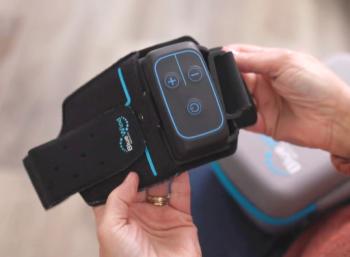
Exercise is not a four-letter word
How to address the excuse, "I have no time to exercise."
I could well relate to her. I thought back to myself, in medical school, with an infant. My husband and I were both medical students. How did we manage to work exercise into our lives? What did we do? In medical school we did everything we could. Now, we have an at-home gym. We are exercise self-starters. And if I don't feel like exercising, I do it anyway, knowing this is an opportunity to watch TV and not feel guilty.
But what about my patient? Seated across from me was a 44-year-old overweight woman, recently started on medication for high blood pressure, with a fasting blood sugar of 108. In my mind, I visualized a 30-pound weight loss, lower blood sugar, and goodbye to her high blood pressure.
She worked full-time and was married with two children. There had to be a way for exercise to become a part of her life. She already was seeing a nutritionist and had lost 5 pounds on a sane eating plan. She had no trouble sticking with that and enjoyed her monthly visits with the nutritionist. So, how could I help my patient?
First, I let her know that exercise is not a four-letter word. We decided to refer to it as "increasing physical activity."
BEGIN WITH SMALL CHANGES
We discussed beginning with small changes. She realized that she didn't have to go home and run a mile. Some increase in physical activity is better than none. She worked on the third floor. She would now walk up and down the three flights. For this, she sacrificed her high heels and wore flats. She did this for 3 weeks.
Then we added some core exercises she could do in her office. She did pushups and situps on the floor of her office 3 days a week. We added tricep-strengthening exercises she could do by putting her palms on a sturdy chair and lowering herself to the floor, keeping pressure on her palms.
The next month she brought some light weights to her office and a simple exercise video for her laptop. She did something for 15 minutes every day before she ate her lunch. She brought salads and yogurt with fruit, cans of salmon, and other healthful food that could be kept at the office and eaten after her workout. This saved time and money versus going out for lunch.
Of course, I clear my patients for an exercise program first and customize my recommendations based on their health and abilities. I tell them to listen to their bodies and warn them if they experience unusual fatigue, chest pain, or other symptoms.
PATIENTS ARE INDIVIDUALS
The same method of incorporating more physical activity in daily life does not work for everyone. Some of my patients start with a "prescription" of 10 minutes of exercise three times a week. Patients pick their least busy days. They do "something" for 10 minutes whether it is a brisk walk, bike ride, or exercise to an aerobic CD. In that way, if they come home on an exercise day and they don't feel like exercising, they can focus on not having to do it tomorrow.
We continue to preach the doctrine of "baby steps" to our patients. That shift in perception means that exercise is not a word that elicits groans; it's a life enhancer.
The author is a practicing family physician, journalist, and medical educator. She shares a practice with her husband Eugene Eisman, MD, an internist-cardiologist. Send your feedback to
.
Newsletter
Stay informed and empowered with Medical Economics enewsletter, delivering expert insights, financial strategies, practice management tips and technology trends — tailored for today’s physicians.














